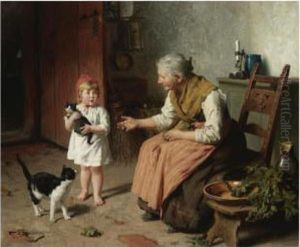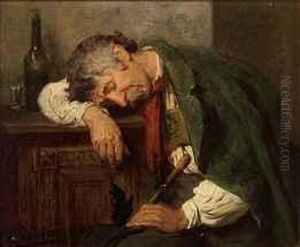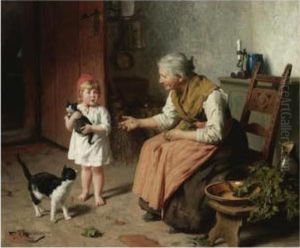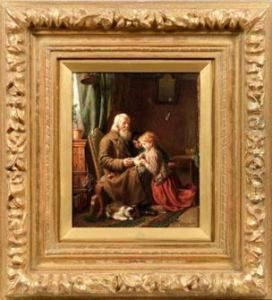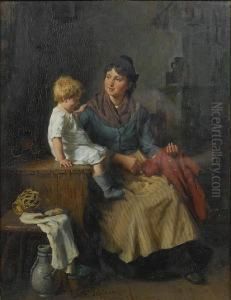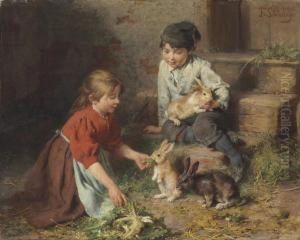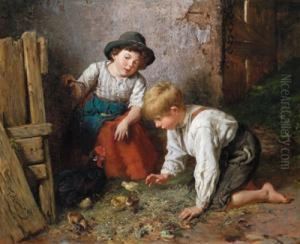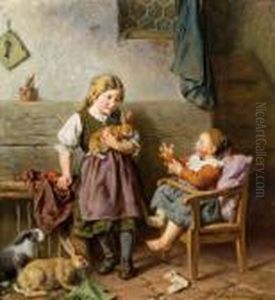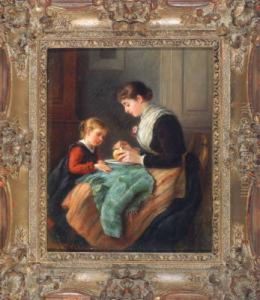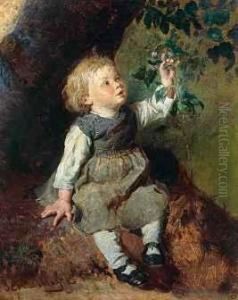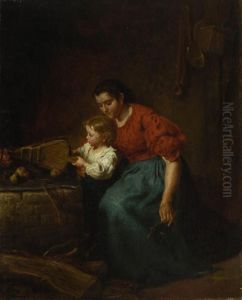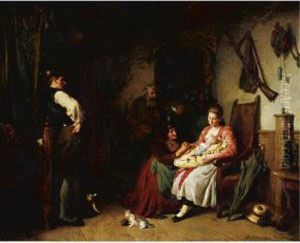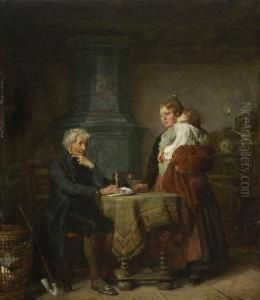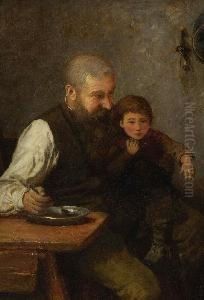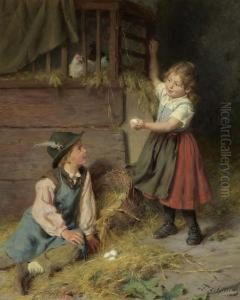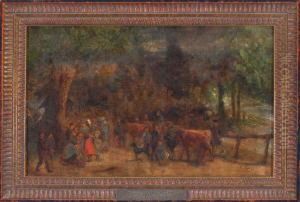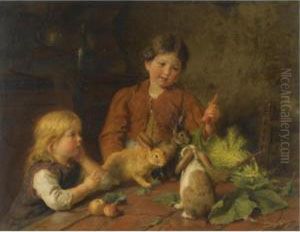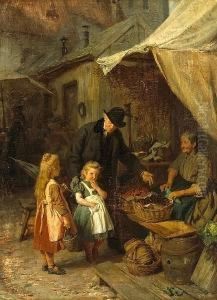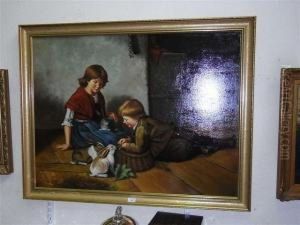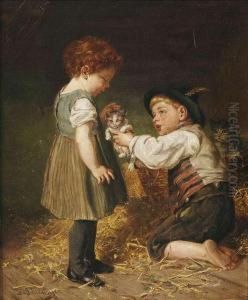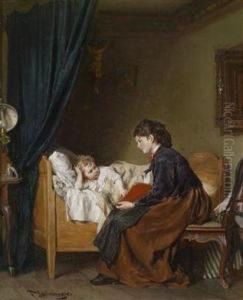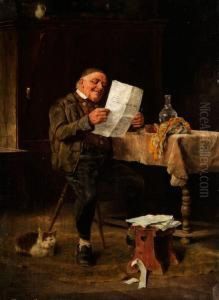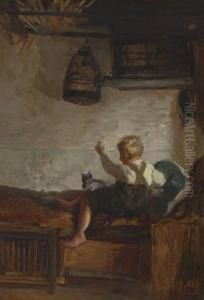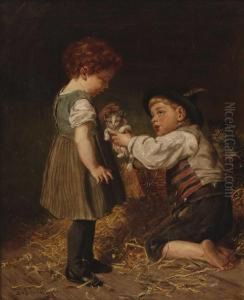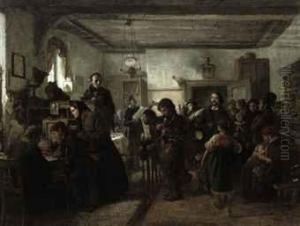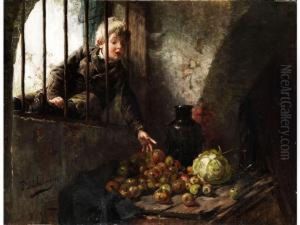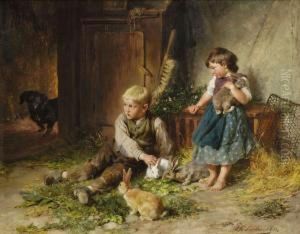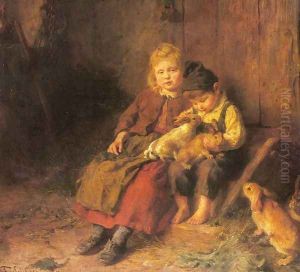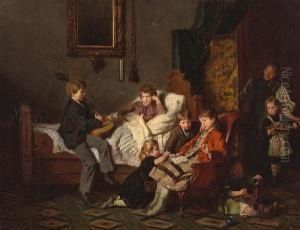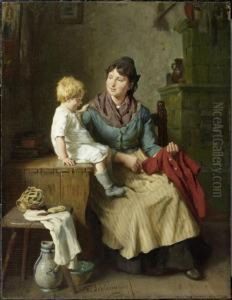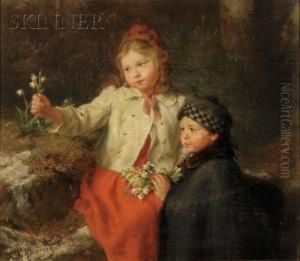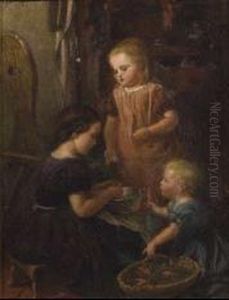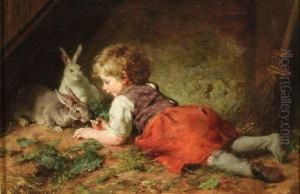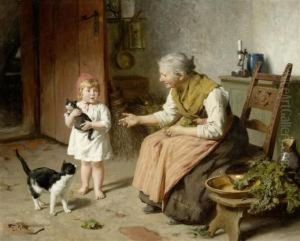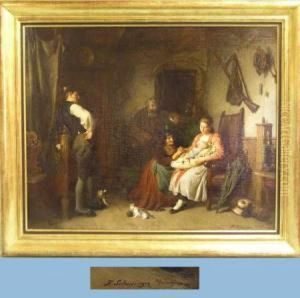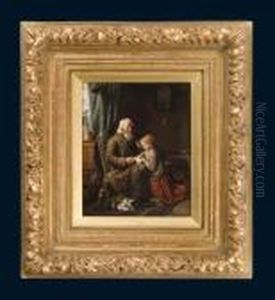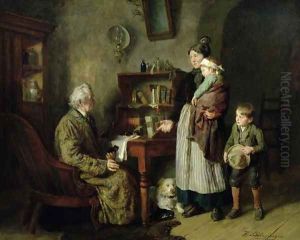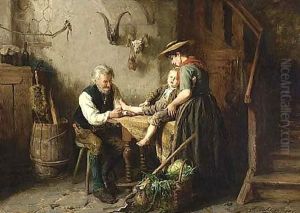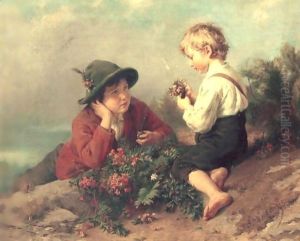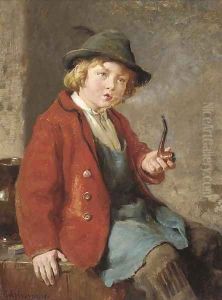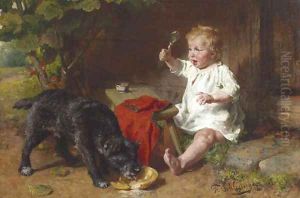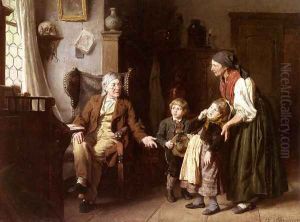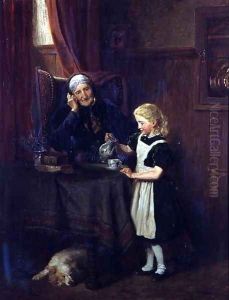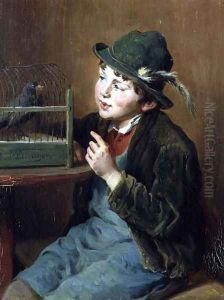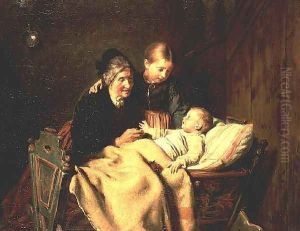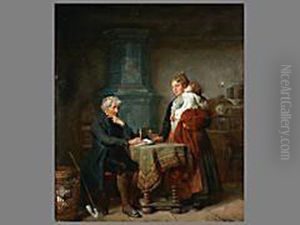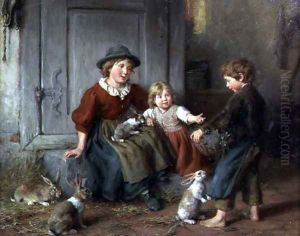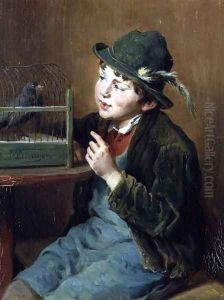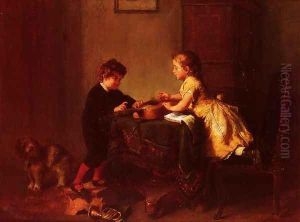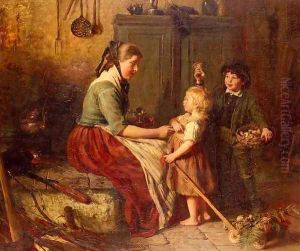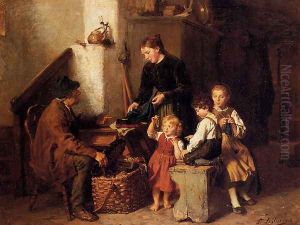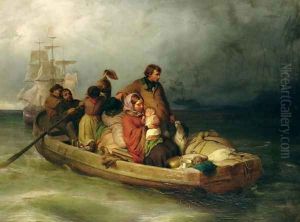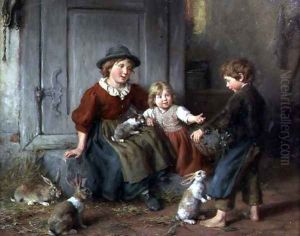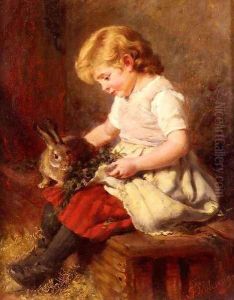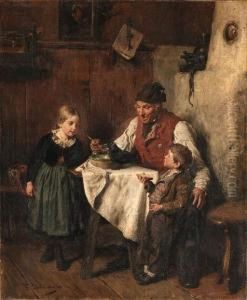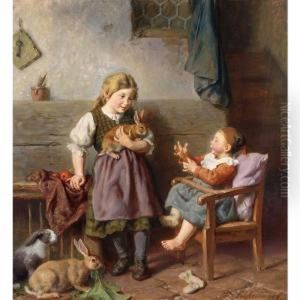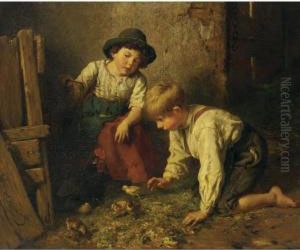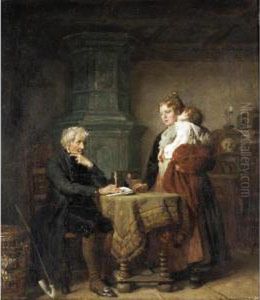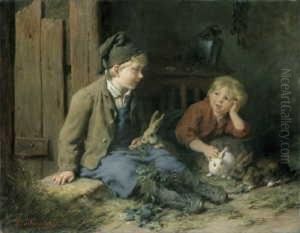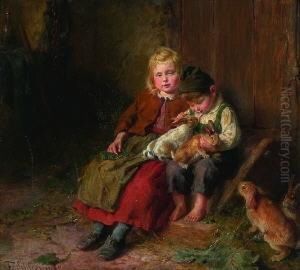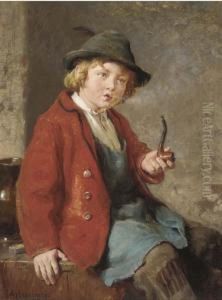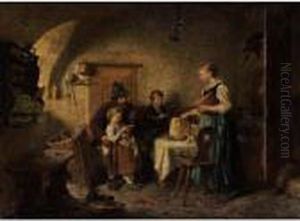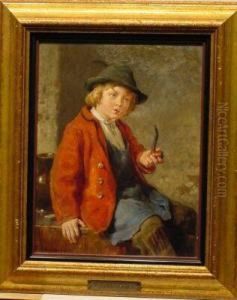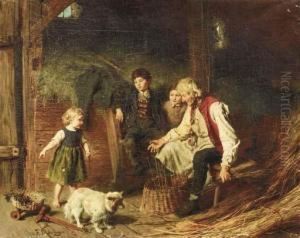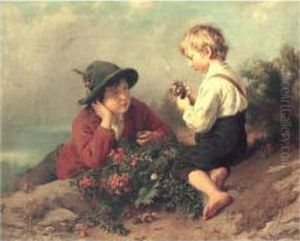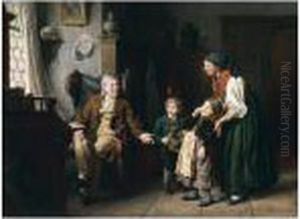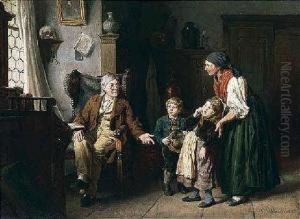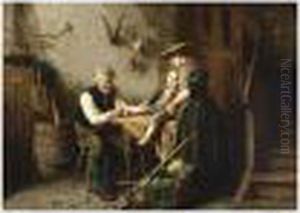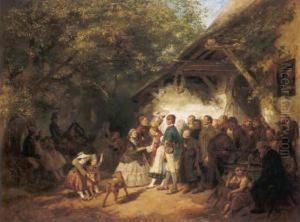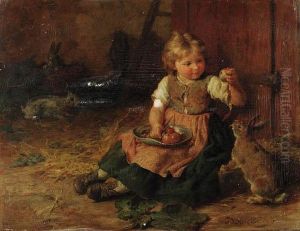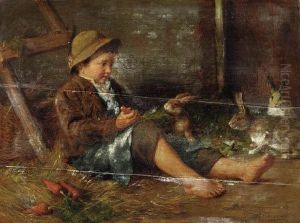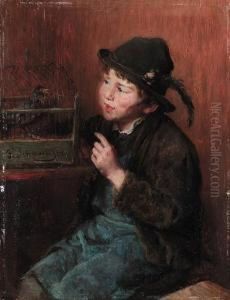Felix Schlesinger Paintings
Felix Schlesinger was a notable German painter, born on September 5, 1833, in Hamburg, Germany. He is particularly remembered for his genre paintings that often depicted children and domestic animals, capturing scenes from everyday rural life with a sense of warmth and sentimentality.
Schlesinger began his artistic education at the Hamburg Art Academy and later moved to the Düsseldorf Academy, which was a major art school of the time, known for its promotion of the Düsseldorf school of painting. Under the influence of the academy, Schlesinger developed a keen eye for detail and a penchant for genre scenes that resonated with the middle-class audience of the period.
In 1855, Schlesinger continued his studies in Paris, where he was influenced by the French genre painters of the time. It was in Paris where he began to establish his reputation, and his works were well received by the public. He exhibited at the Paris Salon, a prestigious event where his paintings were praised for their charm and lifelike quality.
Schlesinger's work typically featured idyllic countryside settings, cosy interiors, and playful narratives involving children and animals. One of his most popular themes was the depiction of children in rural settings, often engaged in activities such as playing with farm animals or learning to read. These scenes struck a chord with the bourgeois collectors of the era who were nostalgic for a simpler, pastoral way of life.
Throughout his career, Felix Schlesinger maintained a successful practice as a painter, enjoying the patronage of affluent art collectors and participating in numerous exhibitions. His paintings were not only popular in Germany and France, but they also gained recognition in the United Kingdom and the United States.
Schlesinger's works are characterized by their fine detail, bright palette, and a light-hearted approach that endeared them to his contemporaries. While his paintings might not have engaged with the avant-garde movements of his time, they provided a comforting reflection of the more traditional and bucolic aspects of 19th-century life.
Felix Schlesinger continued to paint and exhibit his work until his death on October 11, 1910. Today, his paintings can be found in various art collections and continue to be appreciated for their historical value and their portrayal of 19th-century German rural life.
